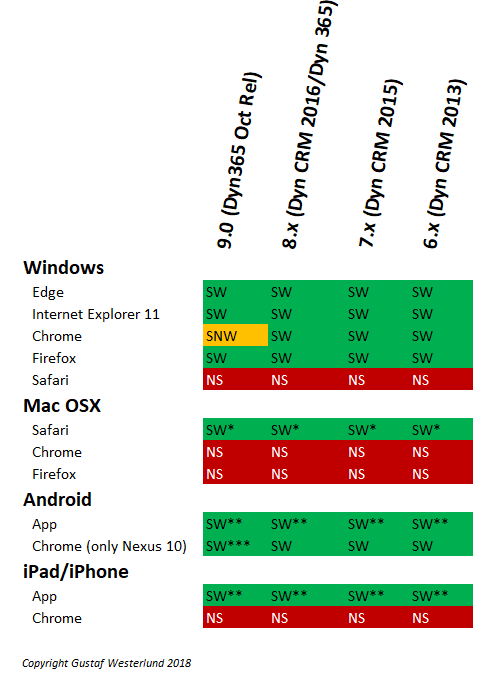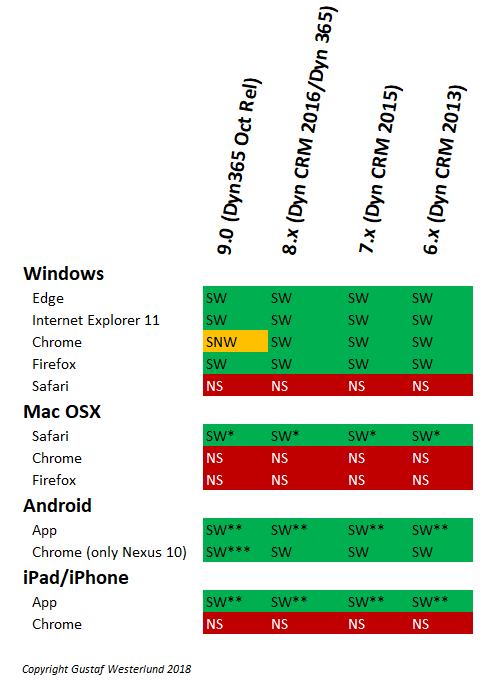
New API Limit
 |
| Photo by Vidar Nordli-Mathisen on Unsplash |
Related to my last post, on working with the API quickly, Microsoft have now released official
documentation that they will, effectivly March the 19:th start limiting the number of API-calls per instance that is allowed to stop what is called “noisy neighbour” problems.
First of all, read the full article here: https://docs.microsoft.com/en-us/dynamics365/customer-engagement/developer/api-limits
Let’s break this down a bit, 60 000 calls per 5 minutes, translates to about 200 calls per second. If you break this, you will start getting exceptions, until the 5 minute period has ended. You are expected to back off, and essentialy handle this. That is the short version. Read the full article for more details.
Update: George Doubinski, a friend of mine and one of the brains of CRM Tip of the Day made me aware of the fact that the limit is per user. I will update the article below on what this means.
What does this mean? Is this a problem?
For most organizations, no, at least that I work with, I not even close to breaking this. If they are using some integration tools like Kingswaysoft or other tools which enable multithreaded integrations, but generally do not need that kind of data throughput then you might temporarily be shut down, but it should self heal after some time, as after each 5 minute time span, you will get another 60 000 requests. That could probably quite easily be fixed by checking the settings of the integration tool. Update: Also, if you integrate each system using a separate accont, you do not risk one system temporarily blocking many other systems from integrating to Dynamics 365. If you are using normal users, this will of course entail a certain license cost, why I generally recommend using app users for integrations, if possible. And after this, you should have one app user for each integrating system.
However, there are some organizations where I forsee issues, and these are organizations which have combinations of any of the following criteria:
- Third party products which, like Marketing Automation, (ClickDimensions, FreshRelevance, SalesForce Marketing Cloud) which have not had time, or got this in their scope yet, and have large amounts of data that they integrate into Dynamics 365. Update: Especially if the user they are using to integrate, the service user, is a normal user, either used by a normal user, or shared with integrations with other systems.
- Legacy Code that has been upgrade to new SDK but uses inefficient architecture – can for example have issues with using ExecuteMultiple which in the article above is described as the recommended best practice. Typically for the reason that the architecure of the code, would require major rewriting to allow for ExecuteMultiple. Update: In this case I strongly recommend looking at using a dedicated user for this specific integration, to isolate any limiations set on that user.
- Organizations with multiple heavy integrations to Dynamics 365. Will be hard to control that the sum total does not exceed 60k per second, and handle back-off in a controlled way. The only reasonable way would probably be to rewrite the integrations to use a proxy or queue instead like Azure Service Bus Queues to integrate and have a single integration interface. Probably a lot easier to write in a blog article than to do in real life. Update: This was an incorrection deduction from my part, as it is not based on the sum total, but on the sum per user, this is not a risk unless many integrations use the same user for integration which I do not recommend.
- Organizations with complex heavy integrations with thousands of lines of integration code that need to be redesigned, rewritten, tested and deployed before March 19:th. And there is no way to test it as there is no TAP/Beta program for this “Feature”. Update: This is still very relevant. Even such a small change as changing the integrating user for an external system should be thoroughly tested and for larger implementations that can be hard to do before March 19.
Example
I see is a typical B2C organization running Dynamics 365 with a marketing automation addon with email tracking and webtracking. They also have a very time critical integration of orders to be able to handle any incidents. Even if the order integration in itself does not reach the limits, it is not unforseeable that a mailblast, especially a good mail blast, to which many customers read the emails click the links, go their site, check their offers and start ordering, would cause a surge of traffic on the Marketing Automation integration – Dynamics 365 API. This of course depends on the settings of this, but perhaps it is critical that all events be tracked to Dynamics. With a mailblast to let’s say 1 Million recipients, quickly hitting the 60 k/5 min limit would happen. When this happens, this would also block all orders from going to Dynamics, causing an effective stop for working with any new incidents in the system.
Update: This is, of course, only relevant if both systems are integrating using the same user. Don’t. However, the marketing automation system above, would hit the limit fast anyway and if the supplier of this system didn’t have time to update their product/service then it would handle this incorrectly. I recommend checking integrating systems and try to turn down the verbosity of what they are writing to Dynamics 365. Then after March 18 when we see how this falls out in detail, you can test a more verbose setting in a test environment, and then see how that falls out.
Summary
For small and medium companies with low complexity working mainly with B2B. I don’t see that much of a problem. Larger companies with complex integrations, large databases, integrations to webtracking, email tracking which often will be B2C companies which have higher levels of automation and larger databases of customers, will probably have larger problems with this and need to start think about this right now.
We need to come back to this subject post March 19, to see how this will really work. But I think the real problem will be for the larger orgs with many and heavy integrations.
I would be really glad to hear your views on this like I got Georges’.
Gustaf Westerlund
MVP, Founder and Principal Consultant at CRM-konsulterna AB
www.crmkonsulterna.se





Recent Comments